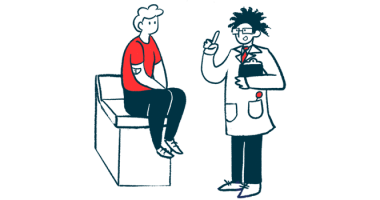Starting on Growth Hormone in 1st Year of Life Linked to Better Outcomes

Early treatment with growth hormone — before 1 year of age — was associated with better body composition and cognitive function after eight years in children with Prader-Willi syndrome (PWS), according to a recent Dutch study.
The findings support additional research favoring early treatment with growth hormone for PWS children.
The study, “Long-Term Growth Hormone Treatment of Children with PWS: The Earlier the Start, the Better the Outcomes?,” was published in the Journal of Clinical Medicine.
Growth hormone (GH) therapy is standard for children diagnosed with PWS as a way to normalize growth rates and body composition. The disorder is characterized by low levels of growth and other hormones, and symptoms include weak muscles, slow growth, developmental delays, and learning difficulties.
Despite its approved use as a standard therapy for children with PWS, the effects of long-term treatment with growth hormone have not been assessed relative to age-matched untreated PWS children.
Also, it is unclear whether starting the treatment in the first year of life is more effective and still safe compared with starting it later in childhood.
To answer this, a team in the Netherlands conducted a prospective study whose main goal was to evaluate the effects of long-term GH treatment on body composition and cognition in PWS children compared to age-matched untreated children.
Additionally, the researchers compared the outcomes of children treated in the first year of life versus those who began the treatment between 2 and 5 years of age. The outcomes were assessed after eight years of daily treatment with 1 mg of GH per m2 square meter.
Children were divided into three subgroups based on the age they started GH therapy: 27 children were in subgroup A (started GH up to 1.05 years, mean age 9 months), 28 children in subgroup B (started GH between 1.05 and 2.27 years), and 27 children in subgroup C (started GH between 2.27 and 5 years). All 82 participants completed the eight years of treatment.
Children in subgroup A had significantly lower weight for height standard deviation scores — a way of measuring how much a certain parameter varies around the average in a reference group — and tended to be taller at the start of treatment. This group also had a significantly lower trunk/peripheral fat ratio.
The researchers first compared the outcomes of the GH-treated children relative to 22 age-matched children who did not receive the treatment and served as controls. The analysis showed that after eight years, GH-treated children had significantly better body composition — as shown by significantly higher lean body mass — and were taller than untreated children.
Also, head circumference, a growth parameter, was significantly larger in GH-treated children. The children also scored higher in cognitive functioning tests than untreated children, although this difference was not statistically significant. The same was seen for the total IQ score, 70.4 vs. 67.3.
Results showed that those who started GH in the first year of life (subgroup A) had a significantly lower mean trunk/peripheral fat ratio compared to children who began GH later (subgroup C). Children in subgroup A also had a significantly lower fat mass percentage.
Also, the lean body mass index — a measure of lean body mass that takes into account height — increased in both subgroups A and C, but it persisted for a longer time in younger children. Height showed no significant difference between the subgroups and was within the normal range.
After eight years, the mean total IQ score was significantly higher in subgroup A (78.1 score) compared to subgroup C (64.8). Children in subgroup A showed a significant improvement in their vocabulary test relative to the other children.
As for safety parameters, the subgroups showed no differences in fasting blood levels of glucose, insulin, and triglycerides. Systolic blood pressure was within the normal range in all children.
Overall, “children who started GH in the first year of life had more prominent effects on body composition during the first few years of treatment and had a higher IQ after 8 years,” the researchers wrote.
“These findings support our hypothesis: The earlier the start of GH treatment, the better the outcomes,” they concluded.








